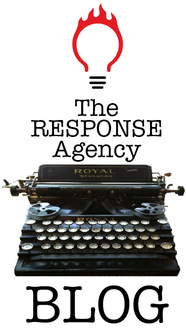Effective Marketing
One Step at a Time
Last week, a decision influencer in a client company complained that the sales letter we wrote for them was deceptive. Why? Because it read like a personal communication. “When you make a form letter appear to be too personalized,” the memo said, “it comes across as misleading and more personalized than it actually is.”
What follows is a slightly edited version of my not too tactful reply.
A personal tone is deceptive? Come on. A major problem with your existing materials is precisely that they read like form letters. No wonder response is low! There is no deception in making any communication feel personal, even when you send it to millions. Presumably, that is why you engaged the likes of the RESPONSE Agency instead of having an attorney or paralegal do the writing.
To cast a bit of light on the method backing my madness, here is some perspective from this alleged direct response mail expert. The assignment was to craft a sales letter to outperform the extant one. In order of clout, the top three tested and proven strategic pegs for effective direct mail are:
Peg 1: Reach the right prospects. You have this one covered, having already engaged with and qualified recipients by phone. The trouble is, you’re pulling disappointing results. Since the list cannot be improved upon, if we wish to improve results, all we have left to work with are Pegs 2 and 3.
Peg 2: Extend a compelling incentive offer. The incentive offer ranks second because it makes the difference between “I should do this someday” and “Yikes! If I act now I get the free widget!” You’d be amazed at the power a gift wields. For just one example, we quadrupled MBA applications for a prestigious private college by adding an offer for a $20 Barnes & Noble gift card. But since it appears that a bona fide gift is not to be, if we wish to improve results, all we have left to work with is Peg 3.
Peg 3: Use proven creative techniques. “Proven” is no overstatement, provided you find yourself a genuine direct mail pro and not one of the charlatans in abundant supply. Direct mail — responsible direct mail, anyway — was built by testing against controls. A warm, first-person letter, one page or longer, with conversational language and short paragraphs, matters. So does a compelling P.S., for it is usually read first. So do things like double-spacing between paragraphs, double-indented paragraphs, and indented first lines on paragraphs. And so does creating the impression of one-to-one communication from a real person who gives a damn about the reader. (Which, you have assured me, you do.) Let’s not weaken the only peg you have left by making the language less personal.
—Steve Cuno
 RSS Feed
RSS Feed



